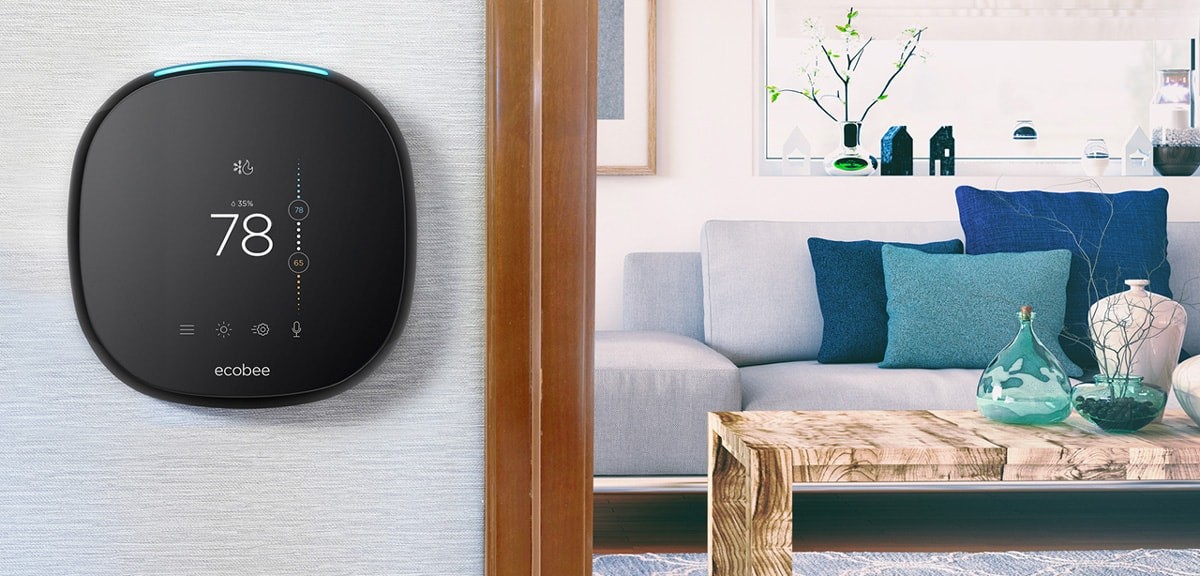Personalize Your Smart Home
The increased functionalities of smart home products are helping homeowners save time, energy and money. In the past three years, Americans have adopted smart homes at a rate of more than 30 percent on average.1 Before getting your smart home connected, learn more about the products, benefits and how you can automate your home and make it work for you.

Smart Home Devices & Benefits
Smart home technologies have the ability to automate your home using smart products. Smart products vary significantly in their functionality but share the common benefit of being remotely controlled via mobile device, computer, or tablet, each addressing different needs – from entertainment to energy efficiency.
Another benefit is that smart products can communicate with each other through wireless signals, allowing one to trigger another. For example, an app can transmit a command to a smart thermostat to increase the temperature.
Some devices are even capable of learning your behaviors and adapting to your life. Once you use it for a short period of time, it will automatically program itself.
Smart Thermostat
Energy savings of about $50 a year – Our energy experts tested both simple and sophisticated smart thermostats in South Florida single-family homes and found the A/C savings for both to be the same. In South Florida, all the savings measured came from reduced cooling. Homes saved on average, 450 kilowatts per year or about $50. If you live in an area that uses heating, you might save more.
Convenience – Being able to control your home’s A/C from your smartphone makes it easy to come home to comfort.
Peace of mind – The ability to remotely monitor your homes’ A/C means you can know what’s going on at home from anywhere, anytime. This can be a great benefit for parents, frequent travelers and those who own a seasonal home.

FPL Amazon Alexa Skill
If you have an echo, dot or ecobee4 with Amazon Alexa, you can get energy-savings tips from Alexa.
Smart Lighting
Energy savings – Smart light bulbs should be looked at for the efficiency of the bulb itself. Dim your lights when you can. Also always remember that LED bulbs can cost a little more upfront, but they create savings for you in the long run by using four times less energy and lasting up to 10 times longer than incandescent bulbs.
Convenience – Smart light bulbs can be scheduled for on and off periods so your lights can turn off when you forget to turn them off. This also eliminates the need for traditional timers attached to lights for a compact design.
Peace of mind – The ability to remotely control your home’s lighting means you can leverage the functionality for energy saving purposes.
Smart Plug/Switch/Outlet
Reducing phantom power – Smart plugs and outlets can turn off power supply to devices with high phantom draw, meaning the device appears off but is still drawing power. Smart plugs and switches can reduce energy loss when devices and appliances are not in use.
Convenience– The flexibility of smart plugs/switches/outlets allow you to connect most in-home appliances.

Energy My Way
Discover clean, affordable and smart energy options that can benefit your family and future generations.
Smart Shades
Reduce Solar Heat – Smart shades have the capability to close your shades when are not home. This can reduce the solar heat gain of your house through your windows and reduce your cooling cost.
Smart Hub
Smart Hub Network – Smart hubs aren’t always needed. But they become essential when multiple smart devices need to interact with each other. Smart hubs are networks which allow one smart product’s action to trigger other smart products’ actions. For example, when you open a door with a smart lock, you can set it up so the living room lights turn on at the same time. Another example would be when turning on your A/C and having the ceiling fan turn on simultaneously.
Communication – In any smart network, there has to be a common language so every device can interact with each other. These languages are called communication protocols. Some of these languages are Z-Wave, Zigbee, and Wi-Fi.
1Source: McKinsey.com